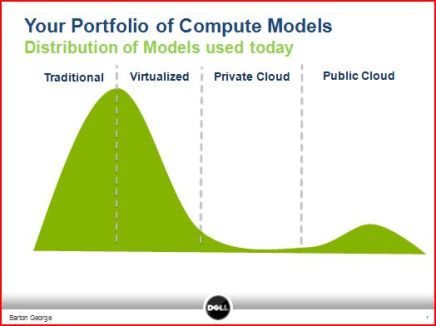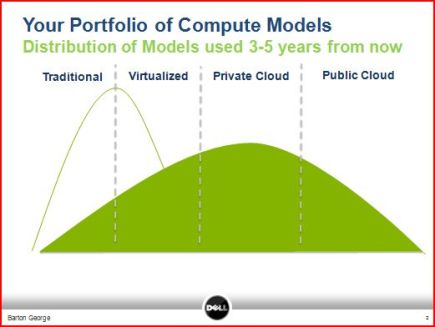Whether you believe in the Cloud or not, it’s coming. That being said it’s not a phenomenon that will fill skies of IT departments tomorrow, but rather it is starting out as another tool in IT’s bag of tricks. As time passes, cloud computing will increasingly become a greater part of the portfolio of compute models that IT departments manage, sitting alongside Traditional computing and Virtualization.
Cloud Computing Today
If you were to graph the distribution of compute models being used today by IT departments in large enterprises, it would look something like the chart below. Today, traditional computing and virtualization are where most of the distribution lies with a little bit of flirting with the Public Cloud in the case of SaaS applications for areas like HR, CRM, email etc. Private cloud is presently negligible.
Over the next three to five years
Over the next three to five years the above distribution will flatten out and shift to the right and will resemble the graph below. Private cloud will represent the largest compute model utilized but it will be equally flanked by virtualization and public cloud. You’ll notice there will still be a decent amount of resources that remain in the traditional compute bucket representing applications that are not worth the effort of rewriting or converting to a cloud platform.
Evolutionary Vs. Revolutionary
One of the things to note with this new distribution is that the lines between Virtualization and Private Cloud will start to blur (there will also be a blurring between Private and Public clouds as hybrid clouds become more of a reality in the future, but that’s another story for another time). There are two ways to go about setting up private clouds, evolutionary and revolutionary.
Tune in tomorrow and learn more about these two approaches and how they differ. ![]()
Pau for now…

